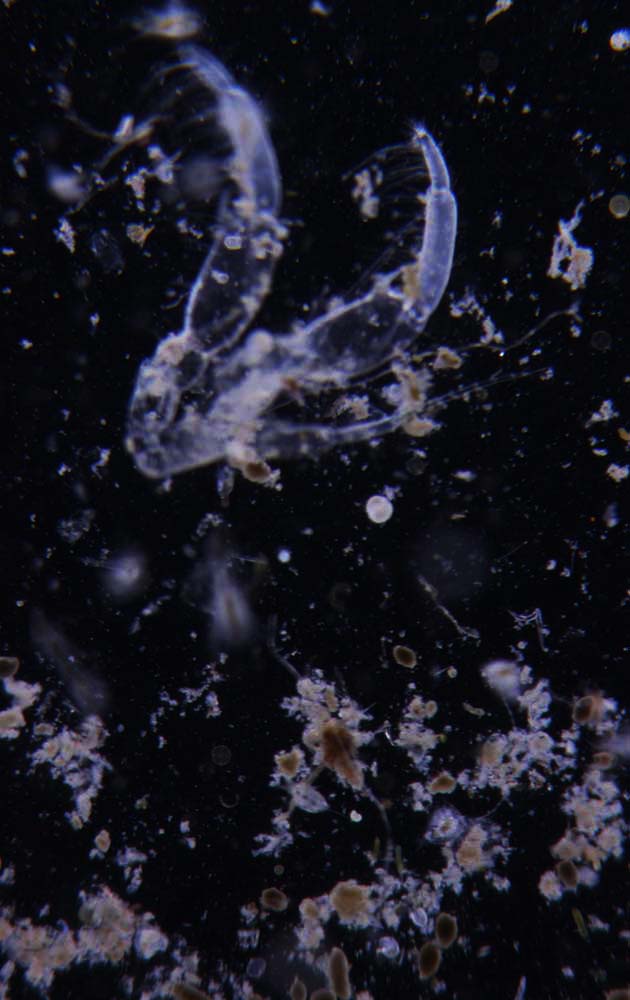Essay- Feb 2015: Cholera on empty shells
First essay for 2015.
This essay can be seen as an extension of the December 2012 essay, "Creation of biofilms". That essay discussed biofilms of the bacterium V. cholerae, while this essay describes biofilms of the same bacterium, but the focus is on the effect the substrate (the material the bacterium is attached to) has on the bacterium. Biofilms in general are discussed on page 108 and 109 of LOTD.
Cholera bacteria drifting in the water stick to shell fragments released by organisms such as copepods and crustaceans when they molt. A major component of these shells is chitin, which is a polymer of glucosamine molecules, similar to cellulose which is a polymer of glucose molecules. The attached bacteria secrete enzymes that slowly degrade chitin to produce fragments that food for the bacteria.
The chitin fragments also induce the Cholera bacteria to produce the "type VI secretion system", or T6SS. This system is a collection of proteins, transported to the outside of the bacterial cell, that form a tube-like structure that resembles the tail of a bacterial virus (a virus that attacks bacteria; see Essay for February 2014 for more on a similar system). The tube-like structure attaches to and kills other Cholera bacteria in the biofilm if they are not of the same immune type as the attacking bacterium. This attack kills and also releases DNA from the dying bacterium.
Induction of the T6SS also induces the production of proteins that take up DNA fragments from outside the cell. These fragments are then substituted for homogeneous segments of DNA of the attacking cell. Thus the predator cell not only kills its prey, but "steals" some of it's genes. Transfer of genes between two adults (with no sex involved) is known as "horizontal gene transfer", contrasted to transfer of genes from parents to children known as "vertical gene transfer".
So we see several types of gene transfer in this story. The predator bacterium has taken genes from a virus that attacks it to make the T6SS. Using the T6SS it kills and takes genes from the bacterial prey. Genes thus can move around and be shared by predator and prey. This kind of genetics is far more complicated than the normal MOTHER + FATHER -> CHILDREN story.
References
[1] The type VI secretion system of Vibrio cholerae fosters horizontal gene transfere, Science 347: 63 (2015).
